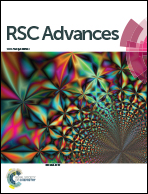Observation of exchange bias below incommensurate antiferromagnetic (ICAFM) to canted A-type antiferromagnetic (cAAFM) transition in nanocrystalline orthorhombic EuMnO3
Abstract
Detailed ac and dc magnetic properties of orthorhombic EuMnO3 were studied using a nanocrystalline powder sample. Orthorhombic EuMnO3 nanoparticles of 45 nm average size were synthesised using a hydrothermal method. Zero field cooled (ZFC) and field cooled (FC) magnetisation shows anomalies at ∼53, 44 and 24 K attributed to paramagnetic (PM) to an incommensurate antiferromagnetic phase (ICAFM), ICAFM to a canted A-type antiferromagnetic order (cAAFM) and spin reorientation transitions, respectively. No indication of a PM to ICAFM transition was observed in either the real or imaginary part of ac magnetisation. The real part of the ac magnetisation curve showed a peak at ∼24.7 K and anomalies at ∼46.8 and 21.8 K were observed in the imaginary part of ac magnetisation. Reduction in the width of the thermal hysteresis between the field cooling and heating magnetisation curve was observed with the nanocrystallites (∼1 K) compared with the bulk phase (∼3 K) EuMnO3. Isothermal magnetisation showed a large value of the exchange bias (2799 Oe at 3 K) below the ICAFM to cAAFM transition temperature.


 Please wait while we load your content...
Please wait while we load your content...